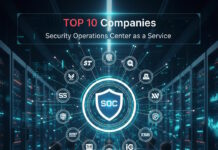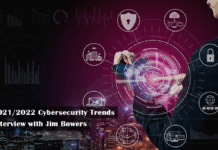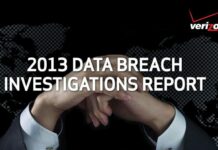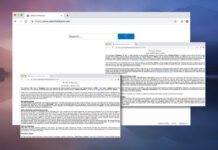
Third-party vendors have transformed operations for many entities. Tasks like payroll, shipping logistics, and IT services that were once a significant internal burden are now outsourced, freeing companies to focus on their core strengths. Yet this convenience has come with a new challenge: a sharp rise in third-party data breaches.
A recent survey revealed that 61% of organizations have experienced third-party data breaches over the past year—a staggering 49% increase from 2023. Too often, excessive access was identified as the primary culprit.
Traditional methods for granting third-party users access to access business systems and data often fall short of meeting the digital transformation ambitions of the modern enterprise. These methods, rooted in conventional Identity and Access Management (IAM) tools, need more agility and scalability to support today’s fluid business needs. Security teams must rethink their strategies, looking beyond traditional IAM solutions to adopt advanced identity platforms that enable more flexible and secure access management.
The challenges of third-party access management
Conventional IAM systems were designed to manage employee access within well-defined corporate boundaries. However, when applied to third-party users, they reveal limitations such as:
Complex onboarding and offboarding
Manual processes for onboarding external users are often slow and error-prone, hampering productivity and raising administrative overheads. Offboarding is equally troublesome. Inconsistent practices leave lingering access risks in their wake, such as users that have left the company keeping their access to sensitive systems.
Lack of granularity
Conventional IAM systems often need more fine-grained access controls to manage external users effectively. Static role-based models often lead to over-provisioning, granting excessive permissions, or under-provisioning, restricting functionality. Both can undermine security and hinder collaboration, highlighting the need for more flexible and precise access control mechanisms.
Inflexible architectures
Legacy IAM solutions are cumbersome, rigid, and often hard to integrate with external systems. This creates barriers in ecosystems that depend on seamless collaboration. Inflexible architectures struggle to scale or adapt to the dynamic nature of modern business environments, making them ill-suited for supporting external users in complex digital ecosystems.
With these limitations, it’s easy to see why modern businesses need IAM solutions that extend beyond brick-and-mortar walls, facilitating secure, scalable, and efficient access for third parties.
Delegated user management: Enabling scalability and efficiency
Delegated user management is an approach helping entities offload critical aspects of user administration to trusted third parties. Instead of centralizing all user management tasks within the business, security teams can delegate specific functions—such as onboarding, role assignments, and access revocation—to designated administrators within third-party partner firms. This approach reduces administrative overhead while maintaining visibility and control over who can manage users within defined parameters. Effective management of external identities results in building stronger and safer business relationships to increase revenue and customer satisfaction.
The key features of delegated user management are the following:
User enrollment options: Users can be enrolled by delegated managers or invited to self-register. Access can be granted automatically based on predefined policies or through a request and approval process, ensuring flexibility and control over user onboarding while reducing the administrative work on host IT teams.
Role-based administration: Enterprises can define granular roles and permissions for delegated administrators, giving them the authority to manage only the users and resources that apply to their partnership.
Audit trails and compliance: All user management activities are logged, providing a clear audit trail to address regulatory requirements and support incident investigations.
Externalized authorization: Centralizing policy enforcement
Externalized Authorization focuses on “what” resources users can access and under what conditions, while Delegated User Management determines “who” is responsible for managing user access. By externalizing access decisions, organizations can enforce consistent security policies across applications, while delegated user management empowers external partners to handle administrative tasks within defined boundaries.
Externalized authorization comes with a set of essential features:
Policy-based access control (PBAC): Externalized authorization lets firms define fine-grained policies based on attributes such as user role, location, device, and access time.
Dynamic context awareness: By integrating real-time data sources, these systems can make access decisions based on the current context, boosting security without impacting user experience.
API-driven architecture: Modern authorization platforms expose APIs that allow seamless application integration, supporting rapid deployment and easy policy updates.
The benefits of combining delegated user management with externalized authorization

Both delegated user management and externalized authorization come with solid benefits when used independently. However, the real added value for businesses emerges when used in tandem.
Enhanced security and compliance: Delegated user management allows organizations to assign specific administrative roles to trusted external partners, enabling them to manage users within defined boundaries. This decentralization reduces the risk of unauthorized access and ensures access controls are maintained in compliance with organizational policies and regulatory requirements.
Improved scalability and efficiency: Organizations can centralize policy management by externalizing authorization, allowing for consistent enforcement across various applications and services. This centralization simplifies updating and maintaining access policies, making it easier to scale as the organization grows. Delegated user management further enhances efficiency by empowering external partners to handle user access, reducing the administrative burden on the central IT team.
Agility in access control: The combination of these approaches enables organizations to adapt quickly to changing business needs. Externalized authorization allows for dynamic, fine-grained access control based on user attributes and contextual factors, while delegated user management ensures that external partners can promptly adjust user access as necessary. This agility supports rapid response to evolving business requirements and security threats.
Consistent policy enforcement: Centralizing authorization policies ensures access controls are applied uniformly across all systems and applications. This consistency reduces the risk of security gaps and ensures that all internal or external users are subject to the same access control standards.
Empowerment of external partners: Delegated user management empowers external partners by granting them the authority to manage user access within predefined parameters. This empowerment fosters a sense of partner ownership and responsibility, leading to more proactive and efficient collaboration.
Driving agility through modern IAM strategies
Working with multiple third-party partners has become unavoidable, and secure access for these users is a necessity. Delegated user management and externalized authorization are the most practical tools to manage the associated access and security.
In addition to access, the digital collaboration facilitated by these solutions helps enterprises realize new opportunities for innovation and partnership. Automating user management and centralizing policy enforcement boost operational efficiency by cutting administrative overheads while maintaining compliance.
As the boundaries of the modern enterprise continue to blur, IAM solutions must evolve to meet the demands of an interconnected digital ecosystem. Delegated user management and externalized authorization are the next frontier in access management, helping entities embrace agility, scalability, and security in equal measure.




























